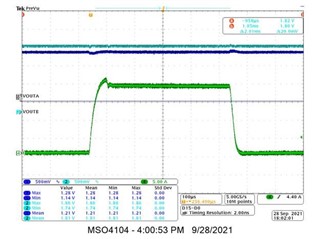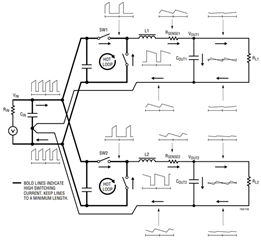Hi TI expert,
If I configure this device to dual output mode, that means VOUT1 and VOUT2 are independent, below questions:
1. how to measure efficiency of these two rails separately? (how to split input current into 1 and 2)
2. if large load transient is applied to rail 1, can rail 2 output see any cross-talk? what is the noise coupling path and how to reduce?



